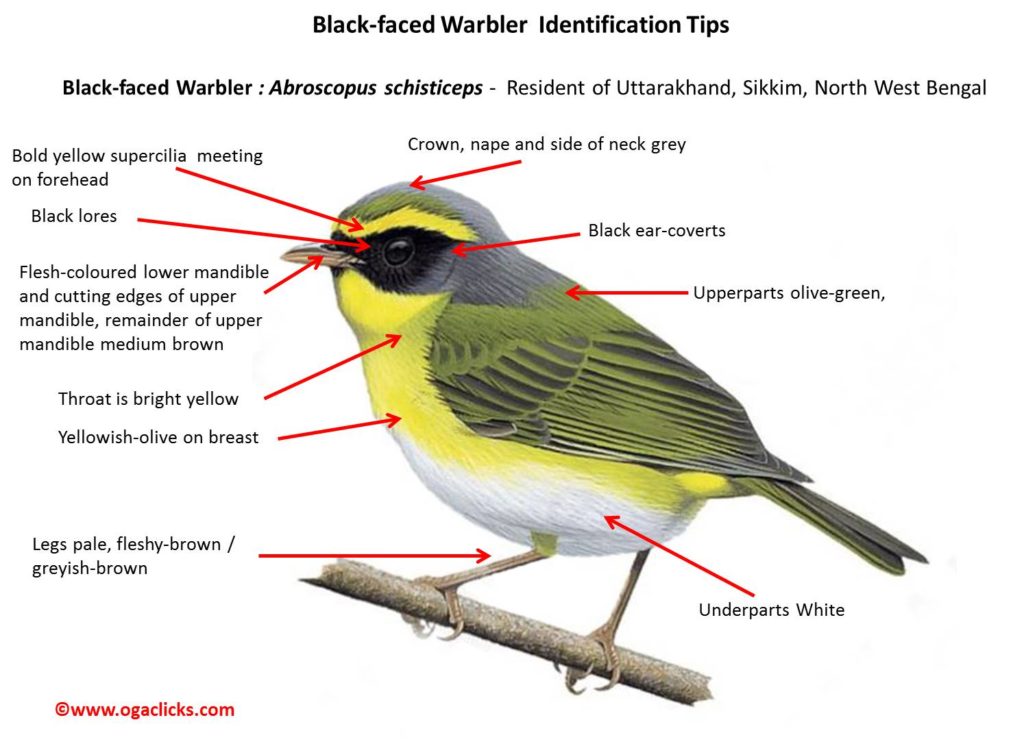Black-faced Warbler

Black-faced Warbler Abroscopus schisticeps
Etymology :
- Abroscopus :Greek word abros –delicate; skopos –
- Schisticeps: Latin word schistus- slate,type of fissile stone; ceps–headed { Slate headed}
Distribution in India: Resident in Himalayas and North East India.
Description: Size of 9cm.It is asmall, rather slim warbler with distinctive head pattern. Nominate race has crown, nape and side of neck grey, bold yellow supercilia almost meeting on forehead, black lores and ear-coverts; upperparts olive-green, brightest on rump; wings brownish with yellowish-olive feather edges and fringes; tail brownish with yellowish-olive feather edges, white inner webs of outermost two feathers; throat bright yellow, underparts whitish, washed with yellowish-olive on breast, flanks and undertail-coverts; underwing-coverts pale yellow; iris reddish-brown to dark brown; flesh-coloured lower mandible and cutting edges of upper mandible, remainder of upper mandible medium brown; legs rather pale, fleshy-brown or greyish-brown.Both the sexes look similar.
Habitat: Found in subtropical broadleaf evergreen forest with moss-covered trees, ravines, shrubby undergrowth and bamboo thickets; chiefly at 1525–2350 m.
Food Habits: It eats tiny invertebrates. It forages chiefly in upper canopy, especially among creepers, to lesser extent also in lower and middle canopy. It feeds restlessly within outer foliage, frequently flicking wings and flashing tail. Gleans food items from surfaces; also eats small flies on the wing during short fly catching sallies. Typically encountered in parties of 10–15 individuals associating with mixed-species flocks outside breeding season, tumbling like falling leaves as they drop from upper to lower canopy.
Breeding Habits: They breed in April-Junein India.The nest is a pad of soft vegetation, either of loose bamboo leaves or of moss and feathers, lined with soft down, placed low down in tree fork, rock crevice, or hollow among bases of bamboo. They lay a clutch of 4 – 5 eggs.